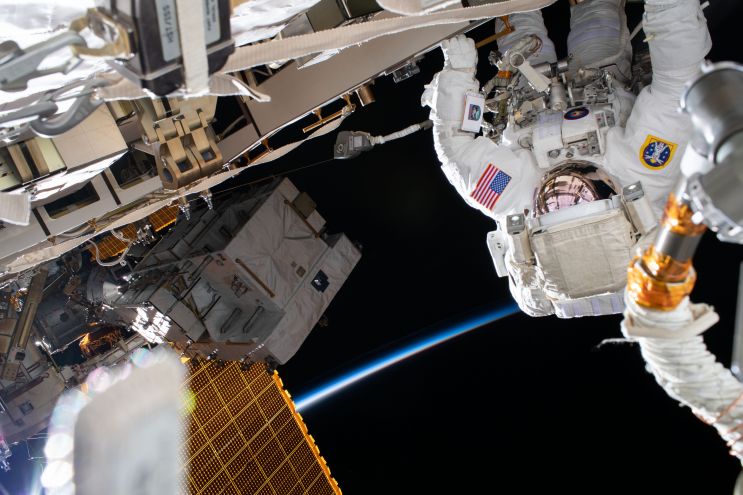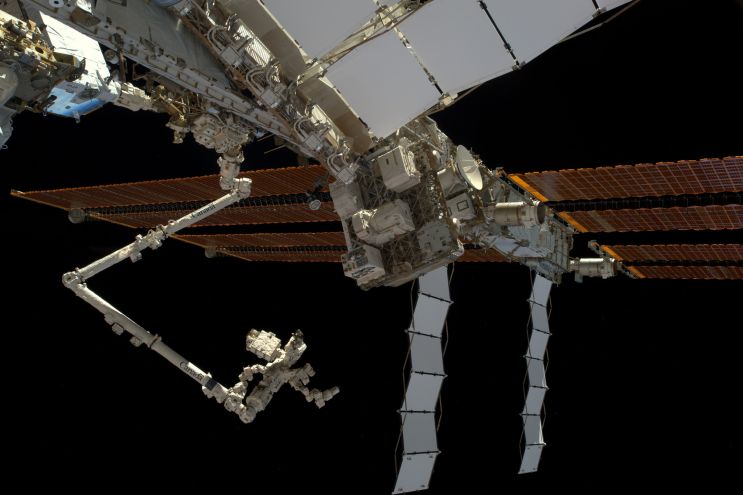
NASA astronaut Chris Cassidy works during a six-hour spacewalk to install three lithium-ion batteries on the International Space Station's truss structure. Credit: NASA
July 2020: NASA recently completed the 3.5-year process of updating the International Space Station’s Electrical Power System (EPS) following installation of the final set of Lithium-Ion (Li-Ion) batteries. As part of the Boeing team, Aerojet Rocketdyne designed, built, tested and assembled the battery cores to the overall design, functions and apparatus provided by Boeing. The EPS upgrade involved replacing obsolete nickel hydrogen (Ni-H2) batteries with reliable, higher-efficiency Li-Ion batteries. The final set was installed by astronauts over 4 extra-vehicular activities (EVAs) in June and July.
A total of 24 Li-Ion batteries replaced 48 Ni-H2 batteries, and were integrated into the EPS. Each providing 15kW of power and designed to operate for at least ten years, the Aerojet Rocketdyne-powered Li-Ion batteries are a more efficient form of energy storage. Li-Ion batteries have nearly 1.5 times more energy density yet only weigh nearly one-half as much as of their Ni-H2 predecessors.
"The Electrical Power System is a critical component of the Space Station that has enabled sustained human presence in Low-Earth Orbit for more than 20 years,” said Eric Edwards, manager of Aerojet Rocketdyne’s lithium-ion battery program. “In addition to the batteries, Aerojet Rocketdyne provided the solar arrays and power management and distribution system to ensure the continuation of important scientific research and experiments on the station."
The Space Station’s solar arrays convert solar energy into electrical power; a portion of which is stored in the rechargeable Li-Ion batteries. During its 90-minute orbit around Earth, the station experiences a 30-minute eclipse period when not exposed to direct sunlight. During this period, the Li-Ion batteries provide continuous power to the station and its various systems.
Aerojet Rocketdyne has the expertise to deliver affordable, reliable, flight-proven space propulsion and power products. In 2018, Aerojet Rocketdyne delivered the final set of Li-Ion battery Orbital Replacement Units to Boeing 18 months ahead of schedule.

In this view of the right side of the International Space Station, you can see the batteries that the spacewalkers switched out beneath the solar arrays. Credit: NASA/ESA

